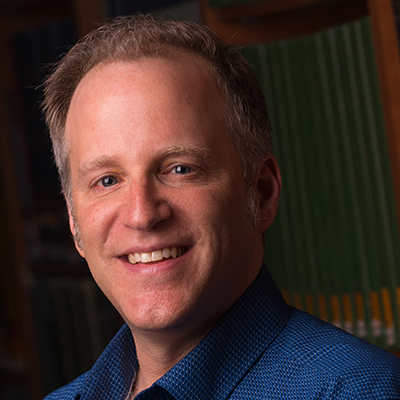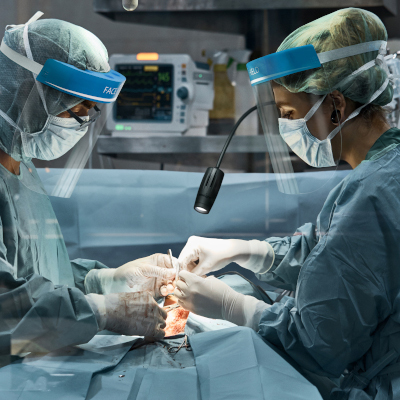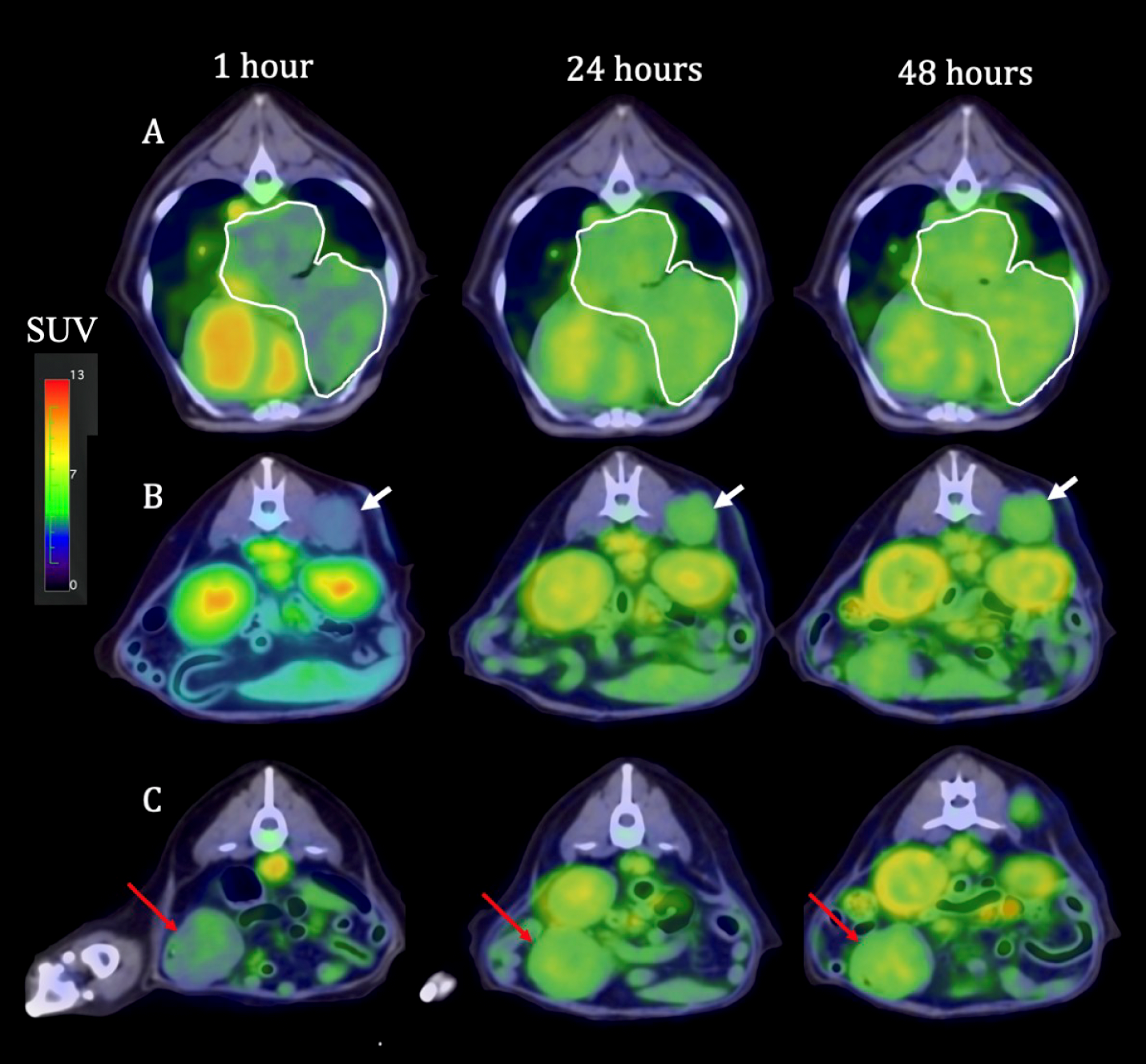
July 17, 2020
Taking the ‘pain in the neck’ out of performing surgery
Joshua Mezrich, MD invented a simple, yet powerful device to illuminate the surgical operating area without heavy head-mounted lights.
Surgeons typically describe their work as challenging, fulfilling, rewarding and stimulating.
Many also will tell you that the job can be a real pain in the neck – literally.
To clearly see all they need to see while operating, surgeons have traditionally used a powerful headlight strapped to their forehead that is powered by a battery pack borne on the back.
Not surprisingly, 80 percent of surgeons say they experience significant pain during surgery. Half believe that wearing bulky headlights contributes to development of cervical spine disorders.
Five years ago, Josh Mezrich, MD, a UW Health transplant surgeon since 2007, was casually chatting with his neighbors, Madison business entrepreneurs Craig and Karen Christianson, when the couple asked Mezrich about life in the O.R.

“I told them my neck was killing me from wearing these headlights during surgery. Craig and Karen were intrigued and wanted to learn more,” Mezrich says.
It wasn’t long before the Christiansons encouraged Mezrich to partner with them to create a potential solution to this obvious problem.
Five years, thousands of hours, and more than 20 prototypes later, Josh’s simple idea has culminated in the MezLight surgical lighting device – an invention which is as stunning in its simplicity as it is in its utility.
Most surgeons hate headlights
“Every surgeon you talk with hates wearing the headlight,” says Mezrich. “We’re not pack horses. Not only does the headlight strain your neck, but it can pop out or get knocked out of place if you turn your head and bump into someone next to you.”
MezLight’s most liberating feature is that it takes the light off the surgeon’s head and mounts it to the side rail of the operating table. Like a modern day snake light for the O.R., MezLight’s flexible neck makes it easy to position and reposition endlessly. It then holds its position firmly, giving the surgeon a steady light source that won’t move when the surgeon moves. The device is also autoclavable, meaning it can be sterilized for repeated uses.
“You can easily move it to provide optimal light without getting in your way,” Mezrich says. “It’s also autoclavable, meaning it can be sterilized for several safe repeated uses.”
Mezrich and his team have received professional advice from UW Health’s Isthmus Project during the development of the MezLight.
“Isthmus Project provided us with guidance on several fronts, especially with regard to proper interaction with UW Health staff and avoiding any conflict of interest,” Mezrich says.
Other surgeons who have seen the MezLight prototype cannot wait to begin using it, and there is already a long list signed up to try it out.

Why didn’t someone invent it before?
“Surgeons simply can’t believe this hasn’t existed for years,” Mezrich says. “It’s so simple, yet nobody thought of doing it. And, with COVID forcing many surgeons to wear a face shield in the O.R., MezLight becomes even more beneficial because wearing a headlight with a face shield is nearly impossible.”
MezLight is looking to ship its first product before the end of the year, pending registration by the U.S. Food & Drug Administration.
While nothing is guaranteed, Mezrich hopes the product will become popular once surgeons start experiencing its benefits – bright light and no pain.
“I don’t want to change how surgeons operate,” Mezrich says. “I want to enhance how they operate.”
Bringing his idea to life would not have been possible without the Christiansons’ business expertise and the help of many other professionals and friends.
“It’s been exciting working with many great partners who have guided this effort. I was not fully aware of the complexity of making a product as seemingly simple as this a reality,” Mezrich said. “Participating in the process and watching it come to fruition is pretty cool.”



